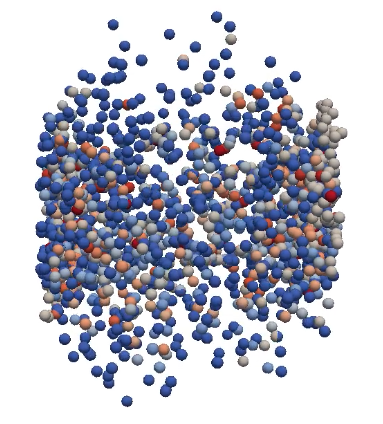

Detailed dynamical approaches that connect the properties of QCD matter such as the viscosity and the equation of state to final state observables are essential to gain quantitative insights. Triggered by detailed measurements, especially of correlation observables, and technical advances in high performance computing it has recently become possible to develop realistic event-by-event descriptions of the evolution of heavy ion collisions. These approaches need to contain the identified major ingredients on which a consensus has just emerged in the community, namely an early stage non-equilibrium evolution followed by a (nearly) ideal hydrodynamic expansion and subsequent gradual decoupling and hadronic rescatterings. The major goal is to develop a transport approach for the dynamical description of heavy ion reactions at FAIR using state-of-the-art scientific computing.
The transport model that is developed in this group is called SMASH. More information on the model, a publication list and a link to the source code on GitHub can be found on the SMASH webpage.
The Facility for Antiproton and Ion Research is under construction next to the campus of GSI in Darmstadt. It is the biggest German investment into an infrastructure for fundamental research. There are four main research pillars: APPA (atomic, plasma, material science and biophysics), NUSTAR (nuclear astrophysics and reactions), PANDA (hadron physics) and CBM (compressed baryonic matter). The main focus of this research group is on hot and dense nuclear matter. CBM at FAIR will be able to measure rare probes with high statistics due to the unprecedented luminosities that will be reached. From 2028, Au+Au collisions up to beam energies of roughly 12 GeV per nucleon will be achieved. Conditions in density and temperature similar to the ones in neutron star mergers are reached in those collisions. Together with the theoretical interpretation, the goal is to find signatures of the first order phase transition implying the existence of a critical point in the QCD phase diagram.